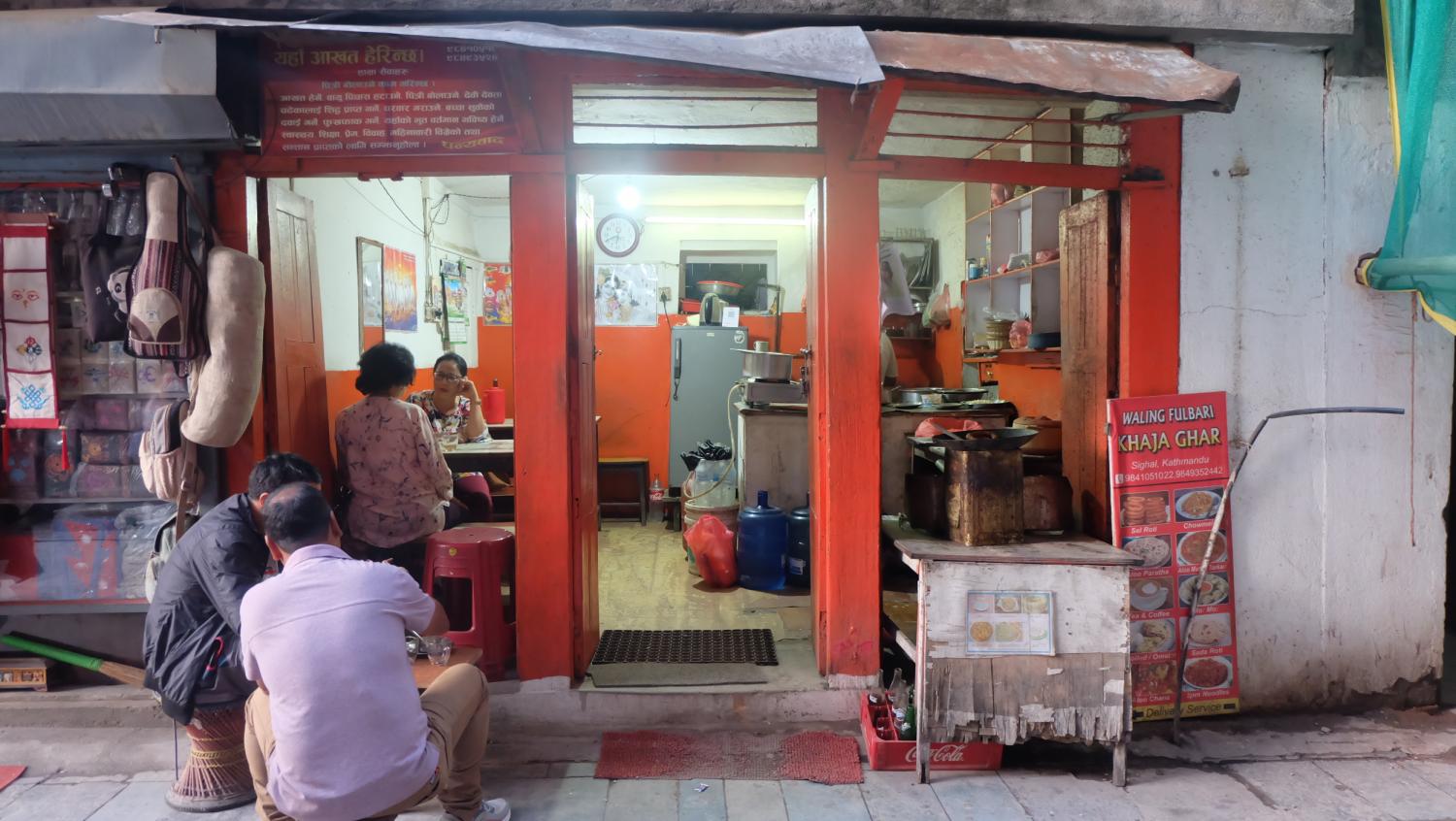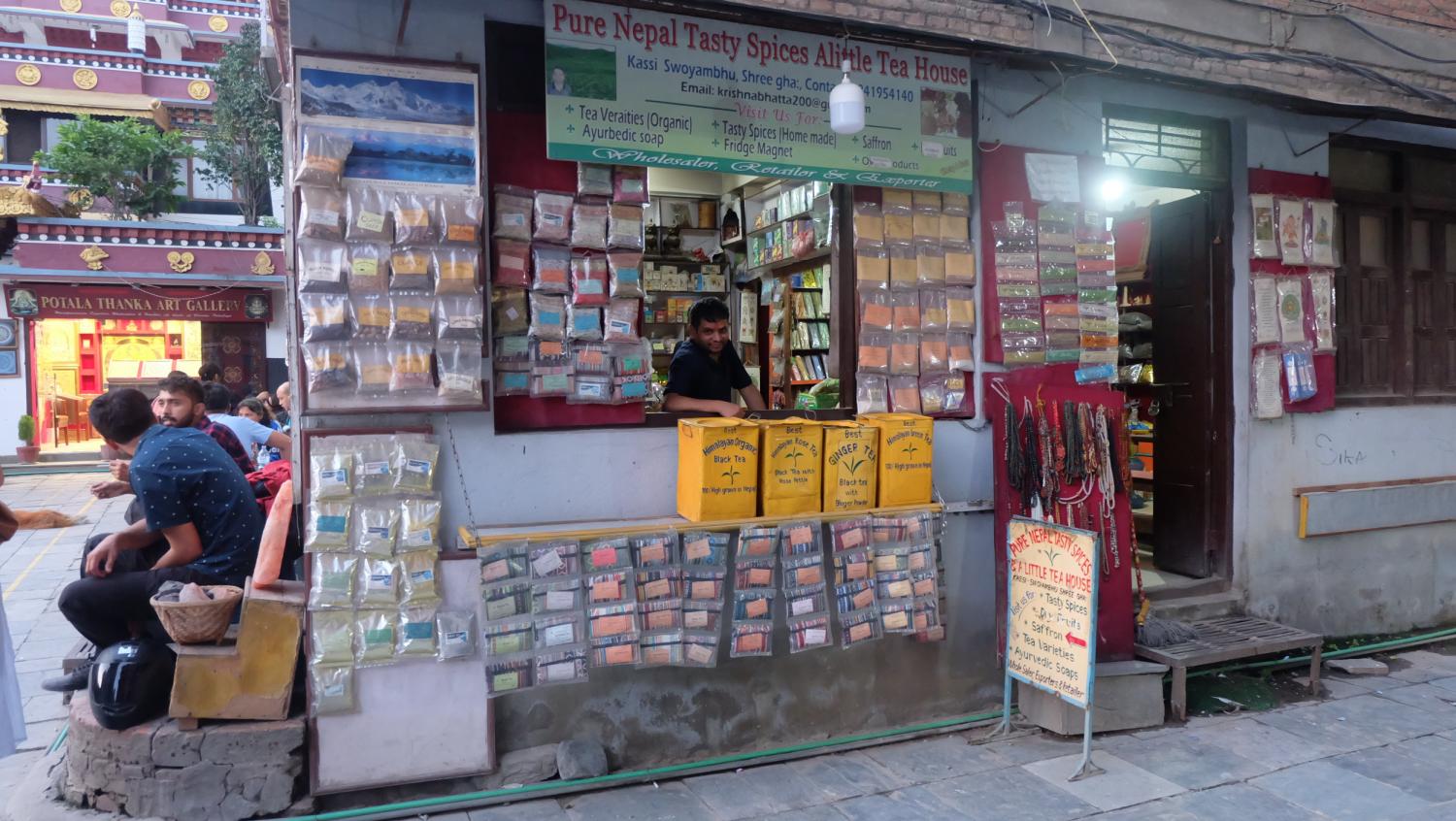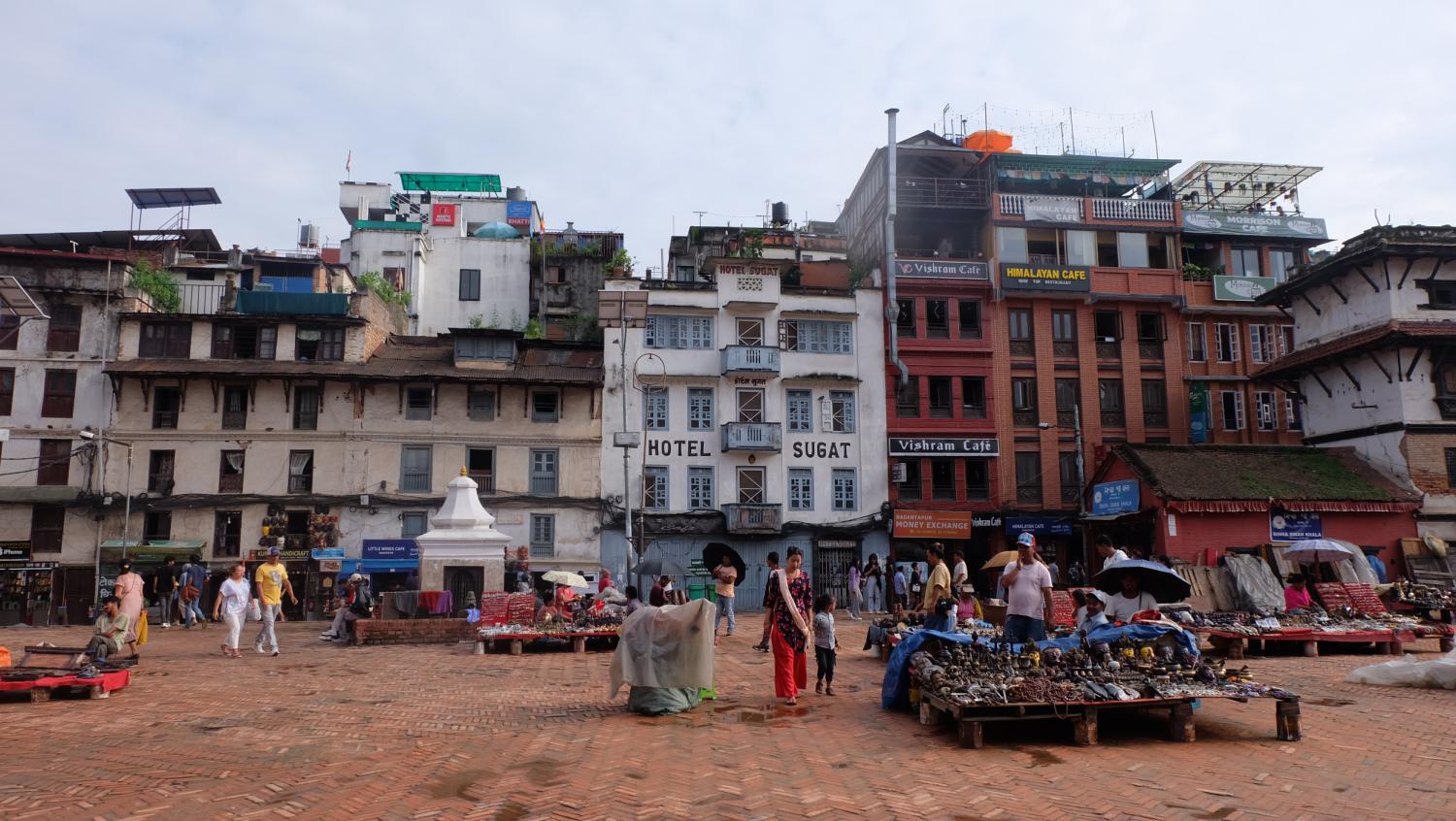Debris remains the lingering evidence of a massive earthquake in Nepal in 2015. With the epicentre in the northwest of Kathmandu, followed by hundreds of aftershocks, the natural disaster killed around 9,000 people, injured over 100,000 and impacted around 8 million. As Nepal began to recover, the coronavirus pandemic brought the world to a complete standstill and tourism cracked and collapsed like people's homes.

Located in the heart of Kathmandu, Hanuman-Dhoka Durbar Square is a vast complex of temples and shrines. (Photo: Thana Boonlert)
Krishna Adhikari, a teacher-turned-guide in his 50s, is one of them.
"The earthquake destroyed the largest part of Kathmandu. When Covid-19 broke out, there were no tourists at all. Life was so difficult. Many of my colleagues were depressed and died," he said. "But it is getting better. By the end of this year, it will fully recover."
Like Nepal, his life is dependent on tourism. Flanked by China and India, this landlocked country opened its door to tourists in the 1950s. A snow-clad stretch of the Himalayas, eight of the world's highest peaks including Mount Everest lie here, conjuring a breathtaking backdrop for visitors. Within a period of a few years, Nepal is due to graduate from least-developed country status to a developing country in 2026, along with Bangladesh and Laos.
"It is a sandwich country, but vegetables and cheese, though small, are delicious," Adhikari laughed.
His optimism is not spin. After two years of stagnation, Nepal is on the road to recovery again. According to the Nepal Tourism Board, it is targeting at least a million international visitors this year. In 2019, it recorded a total of 1.2 million. Of these, it saw nearly 70,000 Thais, half trekkers and half pilgrims. It recently opened its third international airport in Pokhara after Kathmandu Tribhuvan International Airport and Gautam Buddha International Airport.
"I am looking forward to more flights [from Thailand]," Adhikari said.

Rickshaw riders at Hanuman-Dhoka Durbar Square. (Photo: Thana Boonlert)
Nepal is a multi-religious and multicultural society. Its main religion is Hinduism, followed by Buddhism, Islam then others. Adhikari took many of his clients to pilgrimage sites, especially Lumbini, the birthplace of Lord Buddha. We did not go there but explored must-visit attractions in Kathmandu. From a van, I found the capital city crowded with brick-and-mortar shophouses. Residents repaint them vividly every year during their national festival.
We went through confusing traffic and arrived at the Boudhanath Stupa in the afternoon. Despite a cloudy day, visitors flocked to see the world's biggest stupa. In 1979, Unesco added it to the World Heritage List. Boudha is believed to contain Buddha's relics. Devotees brushed mantra bells to purify the body and mind. Inside, a weather-beaten dome carries a copper harmika, 13 conical steps and a parasol. Buddha's eyes that edge the steeple beam in all directions.
Because of natural disasters, Boudha has undergone a few renovations. In 1968, a thunderbolt struck the giant stupa and caused a fire that ruined the pillar of the steeple. The quake in 2015 damaged it again. As a result, the government carried out an entire renovation.

A small eatery in Thamel. (Photo: Thana Boonlert)
Boudha is surrounded by souvenir shops, guesthouses and temples. Guru Lhakhang Monastery is the oldest of its kind. Monks had us sit in rows and perform a group ritual. It enshrines Amitabha Buddha, Arya Avalokiteshvara, Guru Padmasambha and other statues. A rooftop promises the best view of the stupa. Nearby, a monument marks the start of the friendship between Nepal and Japan in 1899. On his way to Tibet to seek sutras, Japanese pilgrim Ekai Kawaguchi stayed here under the care of a local monk.
After a break, we went to Hanuman-Dhoka Durbar Square. Located in the heart of the capital, the area is a vast complex of temples and shrines. Dating back to the 12th century, most of them were built in the pagoda style. It was the Tibetan king's residence until the early 20th century. In 1979, Unesco added it to the World Heritage List. Currently, the square is teeming with hawkers, some of whom can speak Thai.
Walking further, the Kumari-Ghar is a survivor of divine wrath. Built in the 1750s, it is the residence of Kumari, the living goddess who is an incarnation of Kali. Visitors can catch sight of her briefly from a bay window on the 3rd floor of her palace. By leading a sacred life, she leaves her residence only three or four times a year on a chariot. Selected from 15 young girls, Kumari must possess unique qualities, such as blue eyes and a melodious voice, and also pass a test.

Cafes in Thamel. (Photo: Thana Boonlert)
"She is required to spend the night alone in a temple where animal sacrifice is performed. If she can make it, it means she has divine power. When there is none, there will be a natural disaster, like the big earthquake in 1934. There was a dispute over the ceremony of the living goddess in 2015. She was not happy. Monuments fell down, except this palace," Adhikari said.
In 1770, the Basantapur Durbar, a nine-storey palace, was built along with other towers. With the support of China, building protection and renovation works were carried out. Structure reinforcement was achieved with minimum intervention. The restoration involved using old wood members to ensure the authenticity of cultural relics.
I stayed two nights at Dusit Princess Kathmandu, which is a short drive from Boudha and Durbar Square. Opening in July, the property is nestled in a commercial alley teeming with restaurants, cafes and souvenir shops. Lazimpat is a vibrant neighbourhood known for high-end hotels and embassies. Upon entry, guests can see an auspicious sign. Staff welcomed us by applying a tika (red powder) on our foreheads.

Dusit Princess Kathmandu opened in July. (Photo: Dusit)
"This hotel is the result of the vision of our father who wanted to showcase Nepali culture and natural beauty with a touch of world-class service, but he passed away in April last year," said Tenzin Zoepa Lama, chairman of Dusit Princess Kathmandu. Its collaboration with Dusit not only "contributes to the growth of Nepal's tourism but also showcases the unique essence of this remarkable nation".
Suphajee Suthumpun, group chief executive officer of Dusit, said she felt proud of this partnership. Nepal is a top travel destination renowned for its history, culture and travel experience. A projection for a strong recovery in the tourism sector this year is a promising sign. At Dusit Princess Kathmandu, guests can experience Thai and Nepalese cultures. One of its four marketing pillars is local connection.
"We are committed to engaging with local partners, supporting local businesses, and collaborating with community leaders to uplift and empower them too," Suphajee said.

Krishna Adhikari, a teacher-turned-guide. (Photo: Thana Boonlert)
The hotel shows visitors an authentic way of life. At Soi, a signature restaurant by Dusit, we sampled a platter of thali, a combination of dal, curry, yoghurt and fried fish. It also arranged a tour of the neighbourhood. Thamel is a downtown shopping district that jolts sensory experiences. Tea and cashmere scarves are popular souvenirs. While rickshaw riders were crisscrossing through alleys, some locals were calling us.
"It is Kathmandu's life and soul," Krishna said.
This is the first of a two-part travel series that explores tourism in Nepal following the 2015 earthquake. The second part will be published next Thursday.

The Boudhanath Stupa. (Photo: Thana Boonlert)

Boudha is surrounded by shops and temples. (Photo: Thana Boonlert)

Basantapur Durbar, a nine-storey palace, nestles in the inner complex of Hanuman-Dhoka Durbar Square. (Photo: Thana Boonlert)

A tea house in Thamel. (Photo: Thana Boonlert)

Located in the heart of Kathmandu, Hanuman-Dhoka Durbar Square is a vast complex of temples and shrines. It is teeming with hawkers. (Photo: Thana Boonlert)

